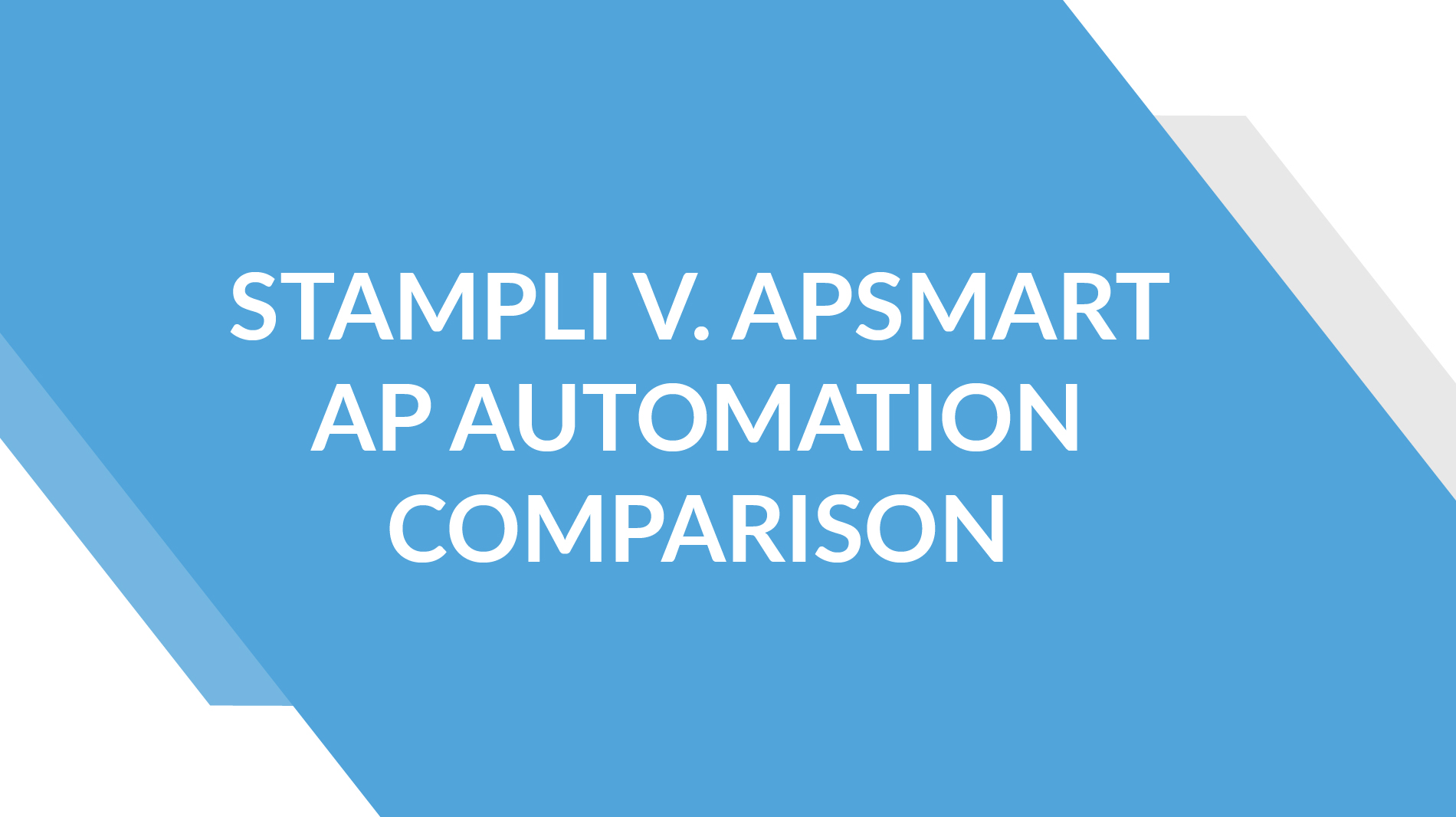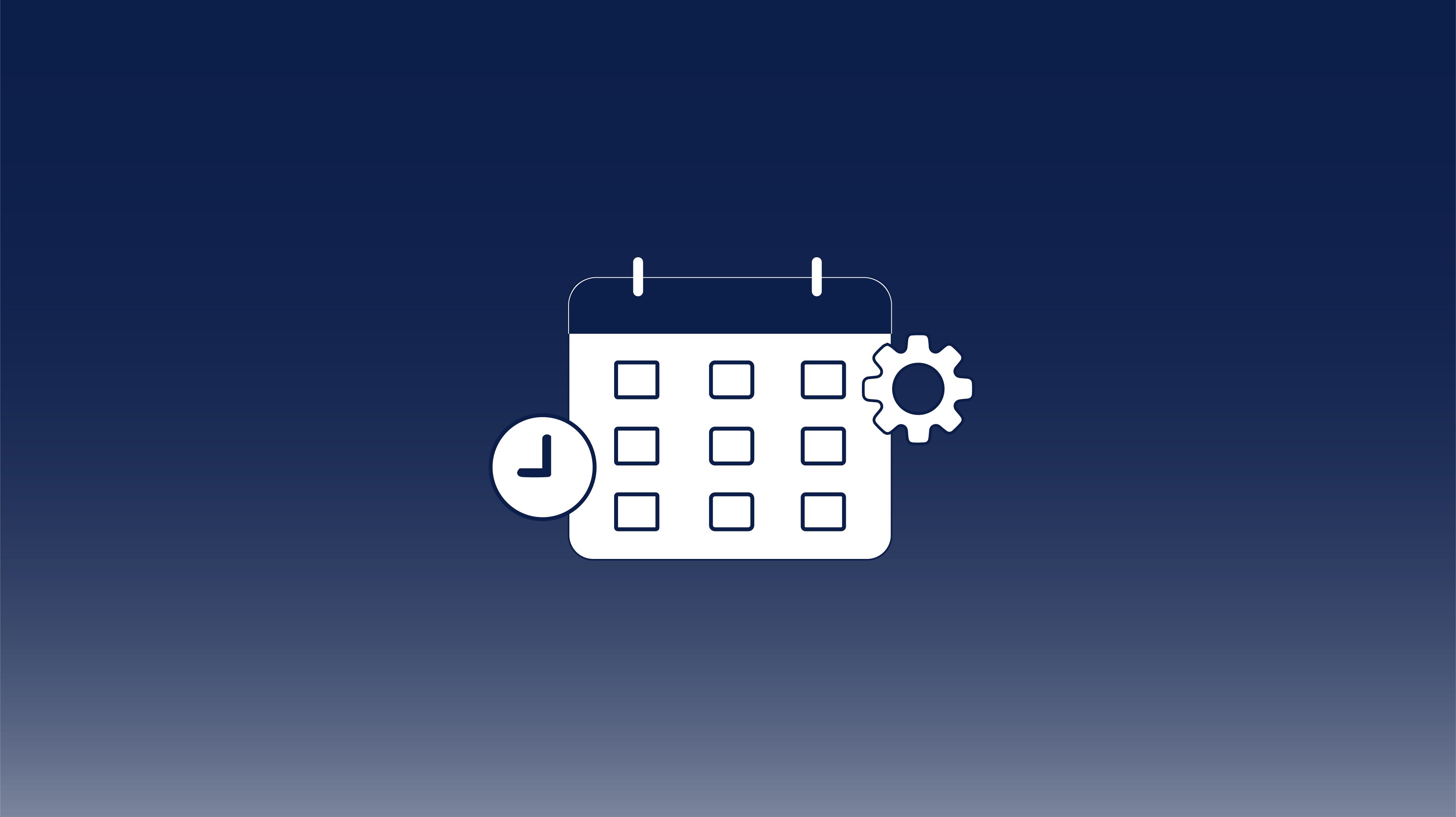Automated Accounts Receivable Programs: Cutting DSO by 30% in Six Months
In today’s economy, speed to cash is as important as speed to market. Companies that let receivables linger for 60, 75, or even 90 days are putting...
7 min read
February 17 2023
by
![]() Chris Cosgrove
Chris Cosgrove

In this AP automation software comparison, you’ll discover how APSmart stacks up against Stampli for invoice processing, approvals, payments, and customization.
As your business grows, it’s inevitable that you’re going to need more resources to achieve both profit and sustainability. And if you play a role in leading your accounts payable department, you probably already know that the way you manage your staffing and organizational structure will directly affect these two metrics.
This is where AP automation software comes in. Equipped with powerful Optical Character Recognition (OCR) and workflow automation technology, a good automation solution can digitally capture, process, and approve your invoices as well as pay vendors, store data, and generate timely accounting reports. With these enhanced capabilities, your department will be able to handle bigger invoice and payment volumes while also improving the quality and accuracy of all transactions.
But will APSmart or Stampli be better for your business?
This comparison guide will show you similarities and differences of each software solution in addition to their overall capabilities and limitations.
In a 2022 survey of over 200 companies and financial institutions worldwide, Strategic Treasurer and Deluxe found thatcost savings was a top priority in the search for AP automation software, followed by more transparency, improved cash flow, lower IT spend, and more revenue.
A high-performing AP automation solution will help a business reach all of these goals combined, and that’s why finding software able to complete the entire procure-to-pay (P2P) process is so important. Both Stampli and APSmart are capable of this, (also called end-to-end processing) with some differences between them as far as customization, implementation, and training. The right choice for your business, then, is going to depend on your overall integration requirements, what accounting system you use, and the individual capacities of your staff.
APSmart is an end-to-end automated accounts payable software solution configurable to the unique workflows of your business. With APSmart, you get complete visibility of your invoice and payment processes in addition to unique reconciliation features, audit capabilities, and fraud protection.
APSmart integrates seamlessly with many top accounting systems and helps you manage accounts payable more efficiently so you can create accurate and searchable timelines of supplier transactions and gain important insights about your business.
With full P2P automation capacity, APSmart gives you the ability to digitize 100% of your invoices, control and change who makes approvals, set up workflows to streamline payments, automate approvals, and much more. It also automatically indexes and catalogs your documents so you can recall them whenever they need to be referenced.
An excellent add-on worth its weight is APSmart’s PAYSmart module. This payables solution combines your payments into a single file, centralizes payment execution, and gathers you monthly cash rebates on eligible purchases. Even better, PAYSmart can run a batch of virtual card payments, ACH transactions, and check transactions from a single payment action, a function otherwise known as “integrated payables.”
Overall, APSmart and PAYSmart can help your business:
Digitize-Manage all invoices and payments in a single, digital interface.
Automate-Approve and post invoices with zero keystrokes.
Monetize-Consolidate payments, pay on time, and gather cash rebates on virtual card spend.
What customers are saying about APSmart:
“CloudX was very inclusive of our feedback during the design and deployment phase of the project and has significantly enhanced how we manage our AP process.” -Danielle O., Controller, Kettle Cuisine
“We bought two new dealerships … without CloudX and APSmart, we would have been forced to add at least one new AP employee.” -Gelaine H., CFO, H & H Automotive
Stampli AP automation software is another P2P accounts payable solution able to give youcomplete visibility and control over your invoice and payment processing. With its AI technology earmarked “Billy the Bot,” Stampli’s software automates invoice processing from invoice capture and GL coding to duplicate identification, approvals, payments, and more.
Compatible with a wide variety of accounting systems, Stampli’s cloud-based software provides seamless integration and offers users an easy-to-use and intuitive dashboard that accommodates advanced searches, report requests, and management functions.
When it comes to payment processing, Stampli also offers Stampli Direct Pay, a cloud-based payment software that helps businesses pay vendors via checks, ACH transactions, or Stampli’s corporate credit card called the Stampli Card. With Direct Pay, users can set internal controls on payment data, streamline all payments, and reconcile transactions easily. Stampli Direct Pay also comes with a Vendor Portal, which is an online interface where payments can be reviewed, discussed, and fulfilled.
If a business chooses to use the Stampli Card to pay vendors, they can:
What customers are saying about Stampli:
“Stampli provided the missing link to make AP completely paperless for CTI. Nothing gets lost and we can scale to meet future growth in invoices without immediately adding headcount.” -Marty Budke, Director of Finance and Accounting, CTI Clinical Trial and Consulting Services
“The task of processing invoices used to involve the whole department working manually, which took time and resulted in errors. Now with Stampli, everything is completed in a fifth of the time and is managed by one person.” -Diana Tabatabai, International Project Manager, Revolve
|
Capability |
APSmart |
Stampli |
|
100% paperless invoice process automation |
Yes |
Yes |
|
Automated invoice capture |
Yes |
Yes |
|
Automated invoice data entry |
Yes |
Yes |
|
Built-in document filing and management |
Yes |
Yes |
|
Centralized document communications |
Yes |
Yes |
|
Visibility over invoice ownership and status |
Yes |
Yes |
|
Control over invoice approval ownership |
Yes |
Yes |
|
Automated PO invoice processing |
Yes |
Yes |
|
Automated Non-PO invoice processing |
Yes |
Yes |
|
Automated 2-way and 3-way matching |
Yes |
Yes |
|
Automated GL coding |
Yes |
Yes |
|
Automated posting to ERP |
Yes |
Yes |
|
Duplicate identification |
Yes |
Yes |
|
Fraud detection |
Yes |
Yes |
|
Simple exception workflow automation |
Yes |
Yes |
|
Control over invoice approver authority |
Yes |
Yes |
|
Human-backed data validation |
Yes |
No |
|
Advanced, custom-tailored workflow automation for manual validation |
Yes |
No |
|
Advanced, custom-tailored exception workflow automation |
Yes |
No |
|
On-site training available |
Yes |
No |
|
Customized implementation |
Yes |
No |
|
Request to Payment automation capability (Purchase request to payment) |
Yes |
No |
|
Automated statement reconciliation (for automotive dealerships) |
Yes |
No |
|
Auditor mode |
Yes |
No |
Paperless Invoice Automation and Customization
Through powerful OCR and workflow automation technology, Stampli and APSmart can scan and digitize all documents easily, cataloging them and making them available for recall at any time and from any location. That said, whether invoices are pending approval, being processed for payment, or sitting in people’s inboxes waiting for approval, each software has multi-criteria search features to locate documents so AP staff can take the appropriate actions. Stampli and APSmart also have powerful reporting and dashboard tools to gather insights on payments, accruals, and spending.
Automated 2- and 3-Way Matching
Manually comparing invoices to POs and manually comparing invoices to receipts to POs become tasks of the past thanks to Stampli and APSmart. Both automation solutions have the ability to digitally locate documents and flag errors or potentially fraudulent activity before invoices get paid, ultimately taking the footwork out of a business’s internal control processes.
Built-In Document Filing and Management
The ability to receive, scan, and store AP documents electronically is a huge benefit automation software provides. With Stampli and APSmart, every document and transaction is tracked, timestamped, and cataloged for easy retrieval and archival. In the end, this not only helps accounts payable adhere to Standard Operating Procedures (SOPs), but it also helps the department maintain better audit-readiness. It’s also worth mentioning that storage and management of physical paper can largely be eliminated.
Automated Payment Capabilities
The last leg of the AP automation journey is completed by simplified payment processing. Whether you want to sort invoices by date and pay manually, set up automatic payment options, or batch pay a group of invoices into a single monthly payment, you’ll discover that Stampli and APSmart give you customizable payment options to save you time, manage your spend, and close transactions out faster.
Human-Backed Data Validation for 100% Verified Invoice Capture
APSmart’s human-backed data validation service is a unique service that Stampli currently does not offer. What this means is that after around 95% of invoices are automatically scraped for data, an APSmart team will review the remaining invoices to make sure they’re added to the system.
Tailored Implementation and Training
Because APSmart has customizable features that go beyond the capabilities of most AP automation solutions, implementation can take between 2 to 8 weeks, and CloudX can personally visit a work location to help train staff on the software. And although Stampli can get customers up and running within a few days, they don’t offer the same in-person service or customizations as APSmart. Here are a few examples of features unique to APSmart :
Both APSmart and Stampli provide simple exception workflow automation, meaning that if there’s an exception of any kind, it’s posted to a pool for review and further processing by an employee. But APSmart goes beyond this by providing advanced exception options based on a set of tailored business rules. If an exception appears in this advanced system, it is automatically routed to a designated employee as per the pre-set rules. Some advantages at this level of automation include:
Virtual card use can come with some pretty nice perks, and PAYSmart by CloudX gives businesses the opportunity to receive cash back (up to 1.5%) whenever they pay vendors with virtual cards. If vendors still wish to be paid by check or ACH, that’s okay too; PAYSmart is configured to pay based on vendor preference.
Stampli’s signature digital card, the Stampli Card, also facilitates fast, digital payments to vendors when using Stampli Direct Pay—but there’s no cash-back option available.
Most businesses can benefit significantly from implementing AP automation solutions, and the problems unique to auto dealerships can be solved easily with a good-fit automation software.
The following are some of the biggest pain points auto dealers face in their accounts payable departments right now:
Excessive invoices and paperwork. With so many parts and services to render, it’s not uncommon for a single dealership location to be processing thousands of invoices each month. Imagine a five-location dealership with an accounts payable department processing invoices at each location.
High volumes of manual errors. When a limited number of AP employees are required to process thousands of invoices manually each month, it’s no surprise that error rates increase. Keying errors, missed payments, and duplicate payments are commonplace in accounts payable departments burdened with high workloads and staffing shortages.
Decentralized AP departments. Many dealerships operate from multiple locations, and this sort of segregated office management system can make paying vendors on time (and correctly) very difficult—especially when invoices get routed all over for approval. To make things worse, payments made from one or multiple locations can easily be lost, duplicated, or worse … stolen.
How does AP automation turn these problems around?
Auto dealerships that choose to implement end-to-end automation solutions for invoice processing and payments can realize a number of benefits, from increased time and cost savings to simpler month-end closes and even cash rebates on vendor spend.
Additionally, because automation centralizes payment processing and provides full visibility of all transactions, any dealership wishing to expand locations can often utilize existing AP staff to manage the exponential growth—without sacrificing accuracy or performance.
Both APSmart and Stampli are excellent end-to-end AP automation solutions for most businesses. Choosing the right fit is most likely going to come down to your customization requirements, which accounting system you’re using, and how you want to manage your vendor payments.
To weigh out your options and learn more about how APSmart works to help you reduce invoice processing costs and manage spend, please request a demo! With the right solution, you’ll be able to transform your entire AP department and set your business up for efficiency, profit, and growth!

In today’s economy, speed to cash is as important as speed to market. Companies that let receivables linger for 60, 75, or even 90 days are putting...

Managing operational costs today often means balancing operational costs against tight margins, making it essential to join a group purchasing...